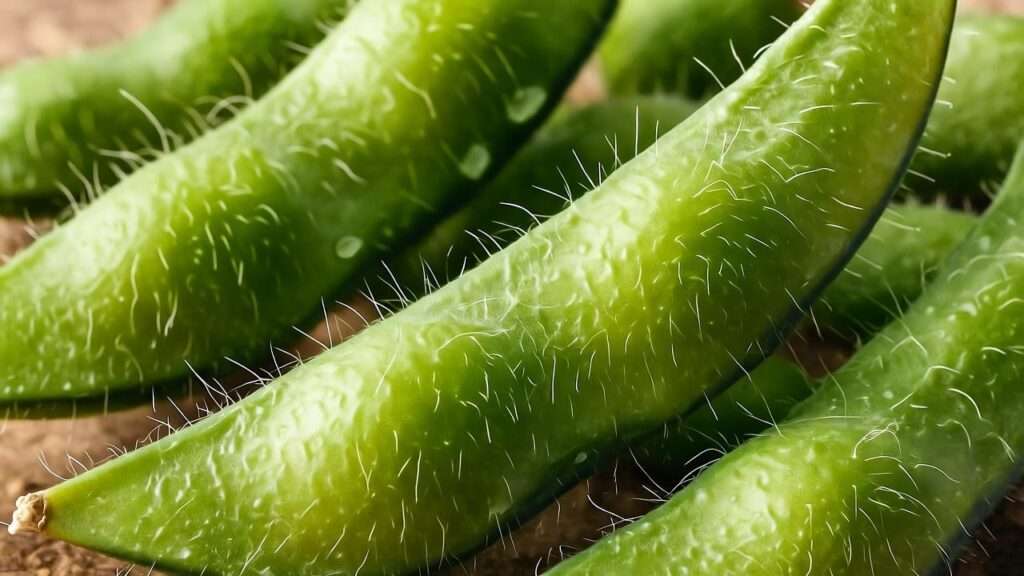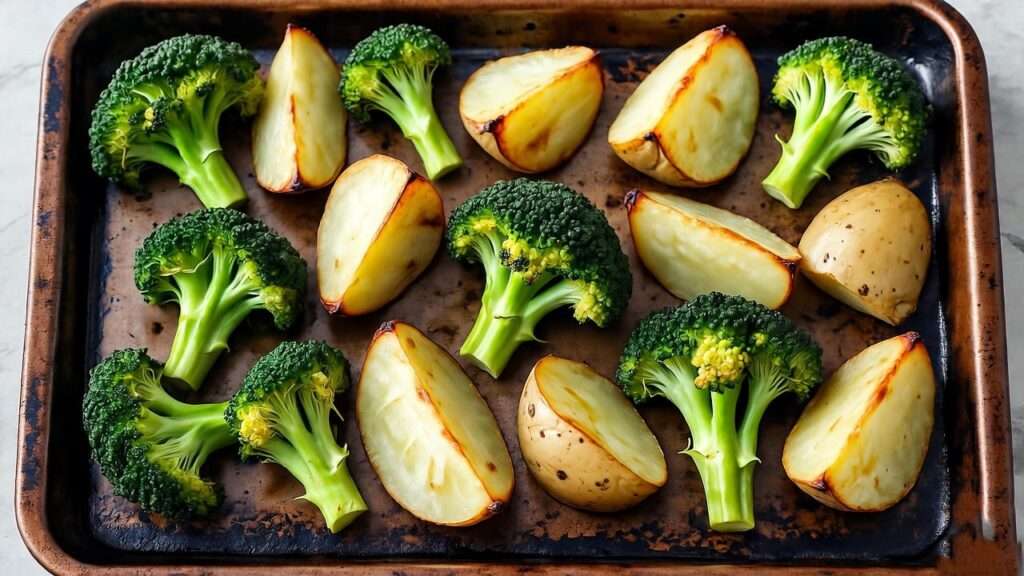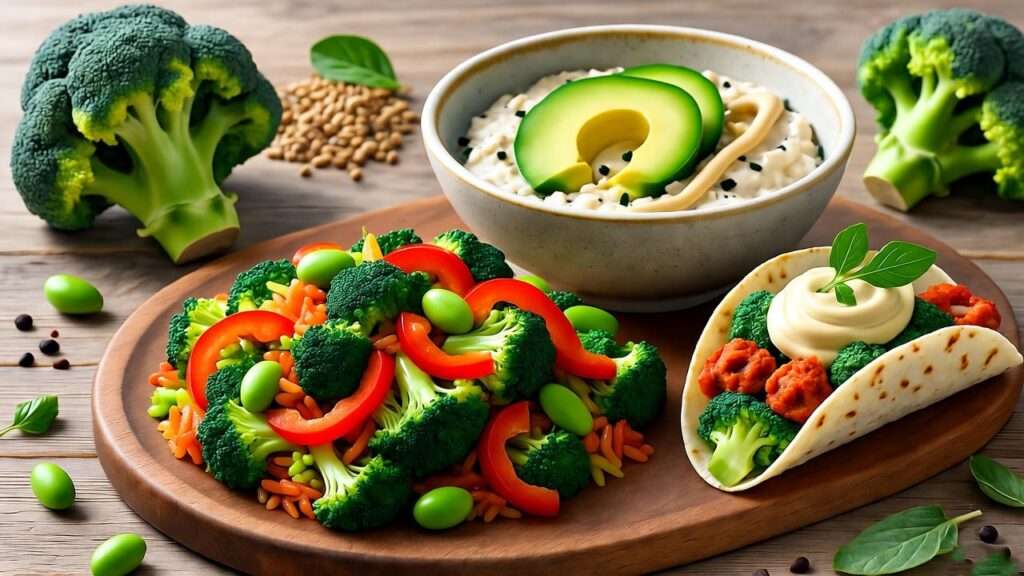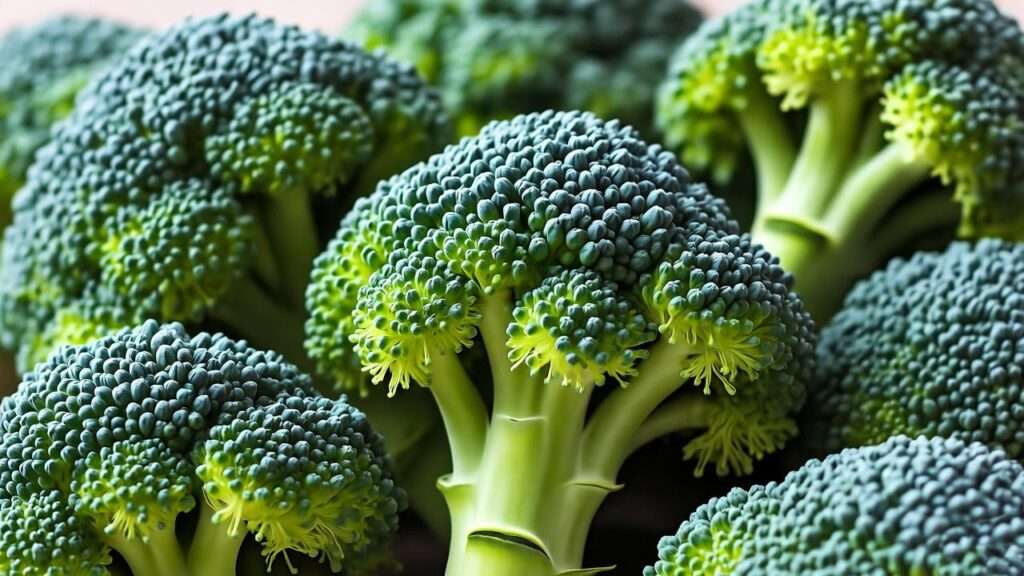Did you know that a single cup of fresh edamame delivers over 17 grams of plant-based protein, rivaling the protein content of many animal-based foods? This vibrant green superfood, often enjoyed as a snack or meal component, is taking the plant-based world by storm. Whether you’re a seasoned vegan, exploring vegetarianism, or simply aiming to eat more sustainably, fresh edamame offers a delicious, nutrient-packed solution. In this comprehensive guide, we’ll dive into why fresh edamame is a must-have for your plant-based diet, exploring its nutritional benefits, preparation methods, and mouthwatering recipes. Backed by expert insights and credible research, this article will empower you to make fresh edamame a staple in your kitchen, addressing common questions and inspiring sustainable, healthy eating.
What Is Fresh Edamame? Understanding the Basics
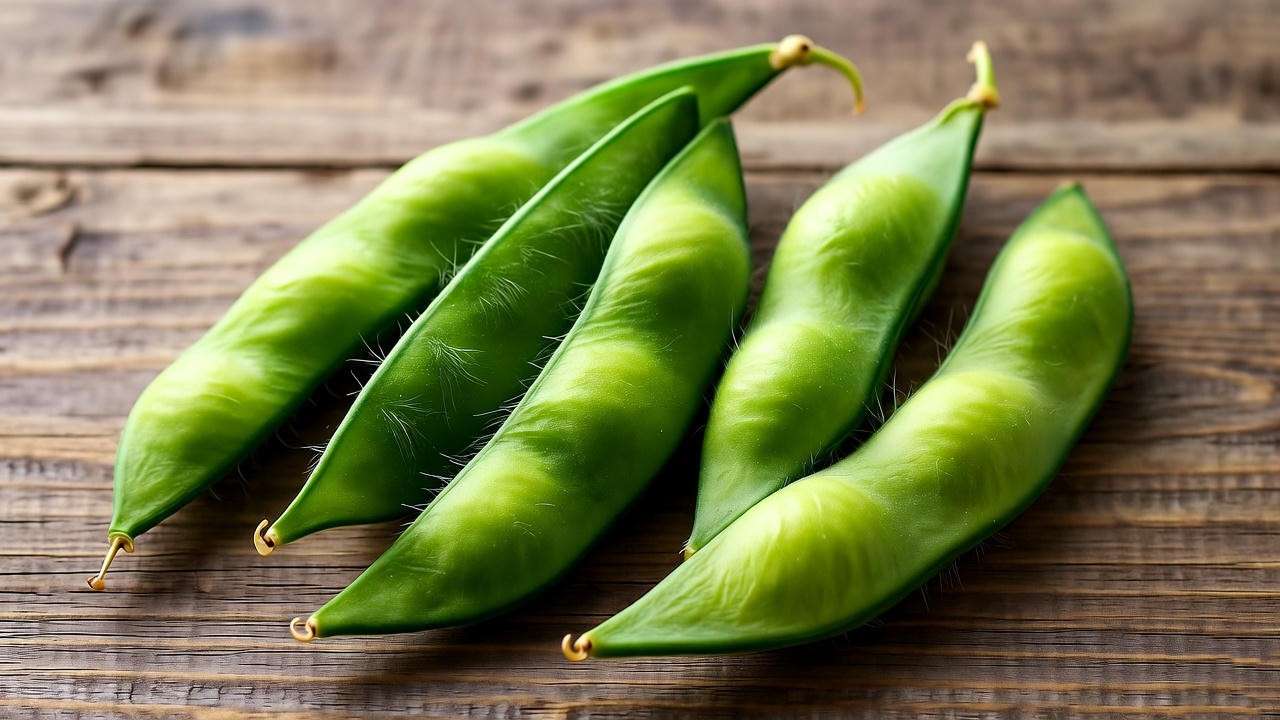
Origins and Cultivation
Edamame, the Japanese term for young, green soybeans, has been a dietary staple in East Asia for centuries. Unlike mature soybeans used for tofu or soy milk, fresh edamame is harvested before the beans fully ripen, giving it a tender texture and mild, nutty flavor. Grown in pods on soybean plants, edamame is a sustainable crop, requiring less water and land than many animal-based protein sources. According to the USDA, soybeans are one of the most environmentally friendly protein crops, making fresh edamame a fantastic choice for eco-conscious eaters committed to a plant-based lifestyle.
Nutritional Profile of Fresh Edamame
Fresh edamame is a nutritional powerhouse, offering a robust mix of macronutrients and micronutrients. A single cup (155 grams) of shelled edamame provides:
- Protein: 17 grams (comparable to eggs or chicken)
- Fiber: 8 grams (nearly one-third of daily needs)
- Healthy Fats: 8 grams, including omega-3 fatty acids
- Micronutrients: Significant amounts of iron (3.5 mg), magnesium (99 mg), folate (482 mcg), and vitamin K (41 mcg)
| Nutrient | Fresh Edamame (1 cup) | Lentils (1 cup) | Chickpeas (1 cup) |
|---|---|---|---|
| Protein | 17 g | 18 g | 15 g |
| Fiber | 8 g | 16 g | 13 g |
| Iron | 3.5 mg | 6.6 mg | 4.7 mg |
| Calories | 188 kcal | 230 kcal | 269 kcal |
This nutrient density makes edamame a standout for plant-based dieters, offering a low-calorie, high-protein option. Research from the Journal of Nutrition highlights soy’s role in supporting muscle health and satiety, ideal for those seeking balanced, nutrient-rich meals.
Why Fresh Edamame Is a Plant-Based Powerhouse
What sets fresh edamame apart is its status as a complete protein, containing all nine essential amino acids—a rarity among plant-based foods. This makes it an excellent choice for vegans and vegetarians looking to meet protein needs without relying on animal products. “Edamame is a game-changer for plant-based eaters,” says registered dietitian Dr. Jane Mitchell. “Its versatility and nutrient profile make it a go-to for building muscle, managing weight, and supporting overall health.” Plus, its low environmental footprint aligns with sustainable eating goals, making it a win for both your body and the planet.
Health Benefits of Fresh Edamame
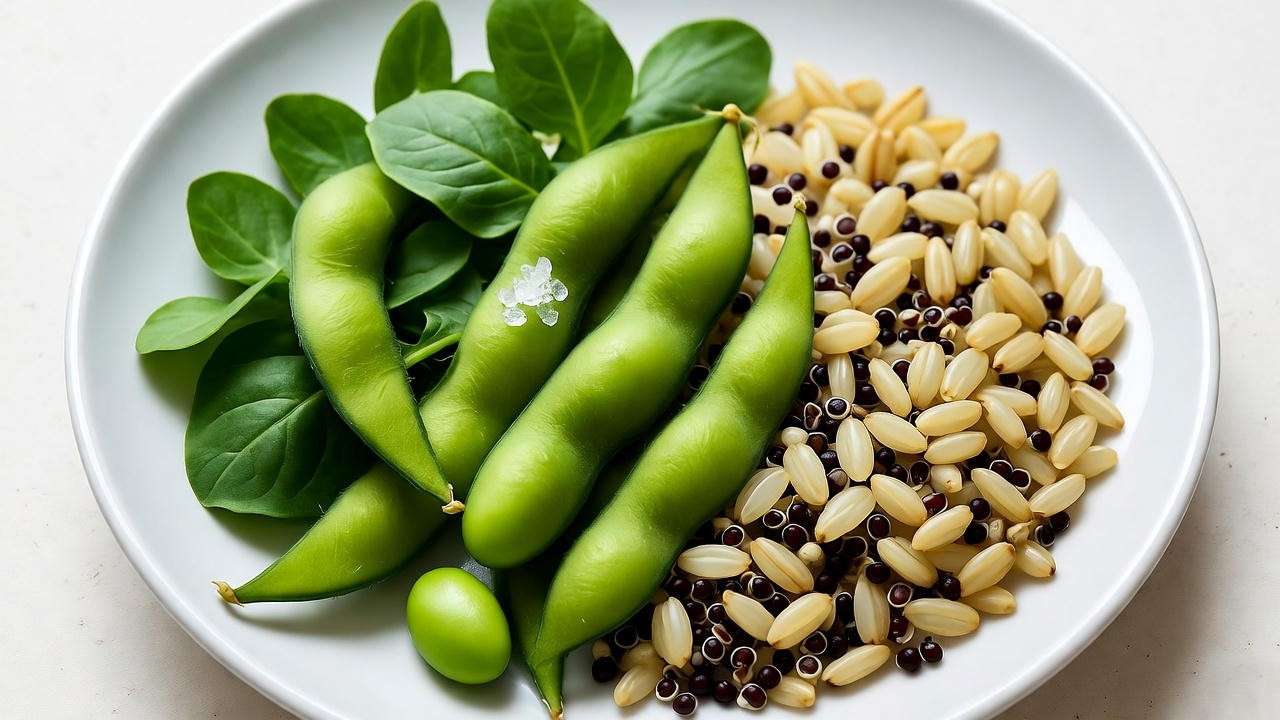
Boosting Protein Intake on a Plant-Based Diet
For active individuals or those transitioning to a plant-based diet, meeting protein needs can be a concern. Fresh edamame delivers a hefty dose of high-quality protein, supporting muscle repair and growth. A 2020 study in Nutrients found that soy protein is as effective as whey for muscle synthesis, making edamame a fantastic choice for athletes and fitness enthusiasts. Its satiety factor also helps curb hunger, aiding in weight management—a key benefit for those balancing caloric intake on a plant-based diet.
Supporting Heart Health
Fresh edamame’s heart-healthy properties come from its soy isoflavones, which have been linked to lower LDL (“bad”) cholesterol levels. A meta-analysis in the American Journal of Clinical Nutrition showed that soy consumption can reduce cholesterol by up to 7%, lowering the risk of cardiovascular disease. Edamame’s low saturated fat content and omega-3 fatty acids further support heart health, making it a smart addition to a plant-based diet focused on longevity.
Enhancing Digestive Health
With 8 grams of fiber per cup, fresh edamame promotes healthy digestion and supports gut health. Its fiber content acts as a prebiotic, feeding beneficial gut bacteria. According to a 2021 study in Frontiers in Microbiology, a fiber-rich diet enhances microbiome diversity, which is linked to improved immunity and mental health. For plant-based eaters, edamame’s fiber helps maintain regular digestion, especially when paired with other high-fiber foods like whole grains or leafy greens.
Other Key Benefits
Edamame shines in other areas too. Its calcium and magnesium content supports bone health, crucial for preventing osteoporosis in plant-based diets. Isoflavones may also aid hormonal balance, particularly for women navigating menopause, as noted in a 2019 study in Menopause Journal. Additionally, its low glycemic index makes it a blood sugar-friendly choice, ideal for those managing diabetes or seeking stable energy levels.
How to Choose and Store Fresh Edamame
Selecting the Best Fresh Edamame
When shopping for fresh edamame, look for bright green, firm pods without yellowing or wilting. Farmers’ markets or Asian grocery stores often carry the freshest options, though frozen edamame is a convenient alternative with similar nutritional value. According to the USDA, frozen edamame retains most nutrients if properly processed. Opt for organic edamame to minimize pesticide exposure, especially since soybeans are sometimes genetically modified. Check for non-GMO labels for added peace of mind.
Proper Storage Techniques
To keep fresh edamame at its best, store it in the refrigerator in a perforated plastic bag for up to a week. For longer storage, blanch the pods in boiling water for 2–3 minutes, then freeze in airtight bags. This preserves both flavor and nutrients. “Blanching is key to maintaining edamame’s vibrant color and texture,” says plant-based chef Sarah Lin. “It’s a simple step that makes a big difference.”
Pro Tip: Blanch fresh edamame before freezing to lock in its bright green hue and nutritional value.
How to Prepare Fresh Edamame: Simple and Delicious Methods
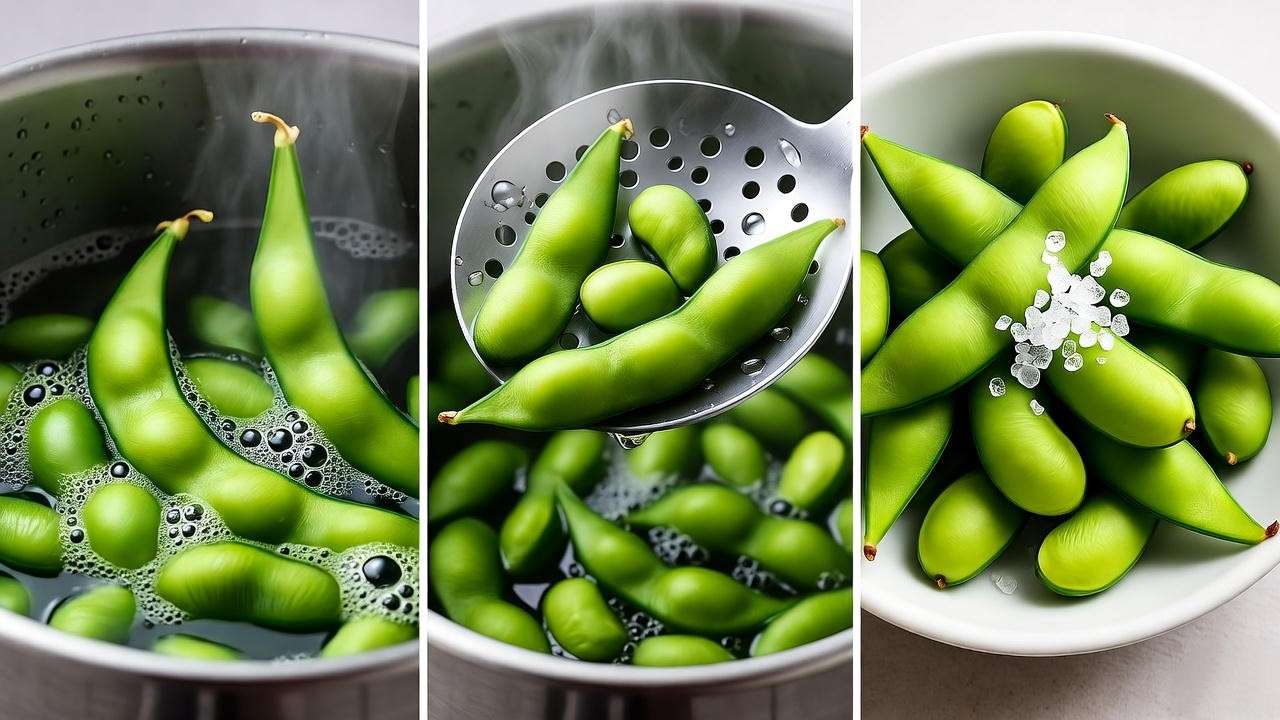
Basic Cooking Techniques
Preparing fresh edamame is quick and easy. Here are three popular methods:
- Boiling: Bring a pot of salted water to a boil, add edamame pods, and cook for 5–7 minutes. Drain and sprinkle with sea salt.
- Steaming: Steam pods for 5–8 minutes until tender. Season with garlic powder or chili flakes for extra flavor.
- Microwaving: Place pods in a microwave-safe dish with a splash of water, cover, and cook for 3–5 minutes.
| Method | Time | Texture | Nutrient Retention |
|---|---|---|---|
| Boiling | 5–7 min | Soft, juicy | High |
| Steaming | 5–8 min | Crisp, tender | Very High |
| Microwaving | 3–5 min | Slightly firm | High |
Season with sea salt, sesame oil, or spices to enhance flavor.
Creative Preparation Ideas
Beyond classic boiled edamame, try these creative methods:
- Roasting: Toss shelled edamame with olive oil and spices, then roast at 400°F for 15–20 minutes for a crunchy snack.
- Blending: Make edamame hummus by blending shelled edamame with tahini, lemon juice, and garlic.
- Stir-Frying: Add shelled edamame to stir-fries or grain bowls for a protein-packed crunch.
Common Mistakes to Avoid
Avoid overcooking, which can make edamame mushy. Always shell the pods before eating, as they’re inedible. For best results, cook in small batches to ensure even texture.
Fresh Edamame Recipes for Every Meal
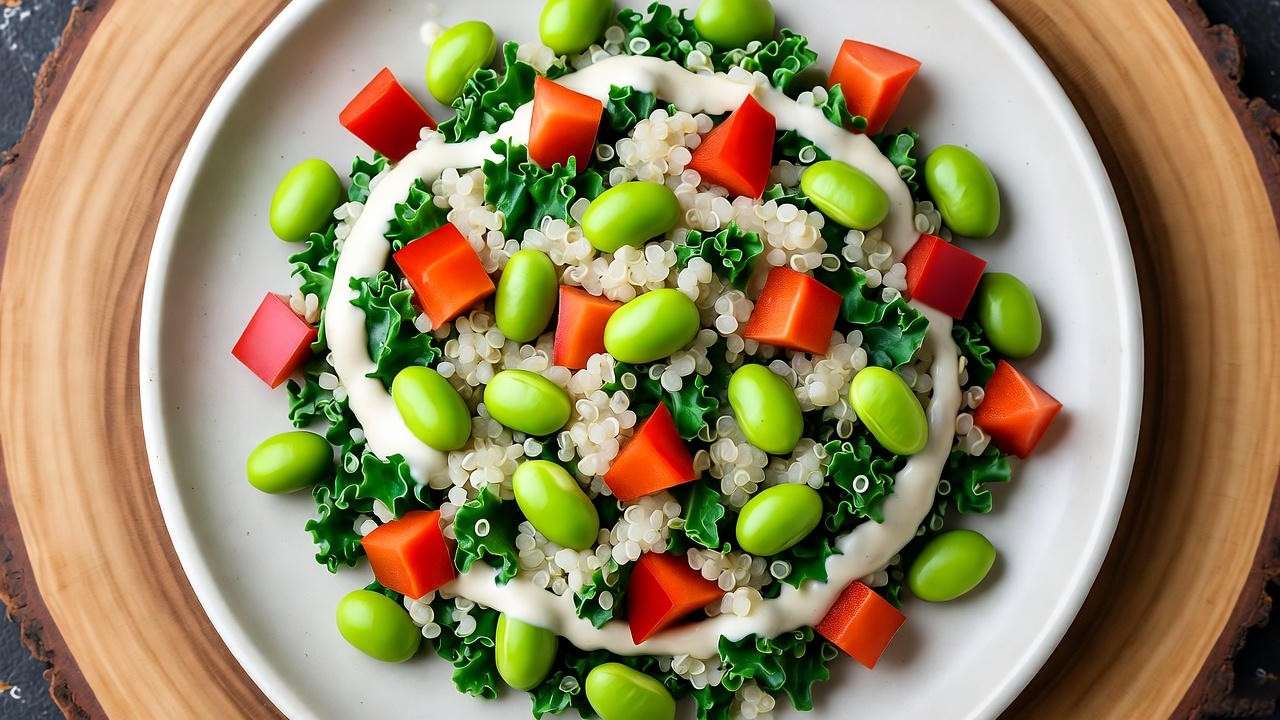
Fresh edamame’s versatility makes it a star ingredient in plant-based meals, from breakfast to snacks. Below are four delicious, dietitian-approved recipes that showcase its flavor and nutrition. Each recipe is designed to be simple, scalable, and adaptable to various dietary needs, ensuring you can enjoy fresh edamame any time of day.
Breakfast: Edamame Avocado Toast
Kickstart your morning with a protein-packed twist on a classic. This edamame avocado toast combines creamy textures with a nutrient boost, perfect for plant-based breakfast lovers.
Ingredients (Serves 2):
- 1 cup shelled fresh edamame
- 1 ripe avocado
- 2 slices whole-grain bread
- 1 tbsp lemon juice
- 1 tsp olive oil
- Pinch of sea salt and black pepper
- Optional: red chili flakes or fresh herbs (basil, cilantro)
Instructions:
- Boil or steam fresh edamame for 5–7 minutes, then shell and lightly mash with a fork.
- Mash avocado with lemon juice, salt, and pepper in a small bowl.
- Toast bread slices until golden.
- Spread avocado mixture over toast, top with mashed edamame, and drizzle with olive oil.
- Garnish with chili flakes or herbs for extra flavor.
Nutrition (Per Serving): ~300 kcal, 12g protein, 15g fat, 10g fiber
This recipe provides a balanced start to the day, with edamame’s protein keeping you full until lunch.
Lunch: Edamame Power Salad
This vibrant salad combines fresh edamame with hearty quinoa and kale, offering a nutrient-dense lunch that’s both satisfying and portable.
Ingredients (Serves 4):
- 2 cups shelled fresh edamame
- 1 cup cooked quinoa
- 2 cups chopped kale
- 1 red bell pepper, diced
- ¼ cup shredded carrots
- 2 tbsp tahini
- 1 tbsp lemon juice
- 1 tbsp olive oil
- 1 tsp maple syrup
- Salt and pepper to taste
Instructions:
- Cook edamame by boiling for 5–7 minutes, then drain and cool.
- In a large bowl, combine edamame, quinoa, kale, bell pepper, and carrots.
- Whisk tahini, lemon juice, olive oil, maple syrup, and a splash of water to make a dressing.
- Toss salad with dressing and season with salt and pepper.
- Serve immediately or store in an airtight container for up to 3 days.
Nutrition (Per Serving): ~350 kcal, 15g protein, 12g fat, 9g fiber
Substitution Tip: Swap tahini for almond butter for a nuttier flavor or use gluten-free grains like millet for dietary restrictions.
Dinner: Edamame Stir-Fry with Tofu
This hearty stir-fry pairs fresh edamame with tofu for a protein-packed dinner that’s ready in under 30 minutes.
Ingredients (Serves 4):
- 1.5 cups shelled fresh edamame
- 14 oz firm tofu, cubed
- 1 red bell pepper, sliced
- 1 zucchini, sliced
- 2 tbsp low-sodium soy sauce (or tamari for gluten-free)
- 1 tbsp sesame oil
- 1 tsp grated ginger
- 2 cloves garlic, minced
- 1 tbsp sesame seeds (optional)
Instructions:
- Press tofu to remove excess water, then cube.
- Heat sesame oil in a large skillet over medium heat. Add garlic and ginger, sautéing for 1 minute.
- Add tofu and cook until golden, about 5–7 minutes.
- Add edamame, bell pepper, and zucchini. Stir-fry for 5–8 minutes until veggies are tender.
- Stir in soy sauce and sprinkle with sesame seeds. Serve over brown rice or noodles.
Nutrition (Per Serving): ~280 kcal, 18g protein, 10g fat, 7g fiber
This dish is customizable—swap veggies or add a spicy kick with sriracha for variety.
Snack: Spicy Roasted Edamame
For a crunchy, portable snack, roasted edamame is a high-protein alternative to chips or popcorn.
Ingredients (Serves 4):
- 2 cups shelled fresh edamame
- 1 tbsp olive oil
- ½ tsp chili powder
- ½ tsp smoked paprika
- Pinch of sea salt
Instructions:
- Preheat oven to 400°F (200°C).
- Boil edamame for 5 minutes, drain, and pat dry.
- Toss edamame with olive oil, chili powder, paprika, and salt.
- Spread on a baking sheet and roast for 15–20 minutes, stirring halfway, until crispy.
- Cool slightly before serving. Store in an airtight container for up to a week.
Nutrition (Per Serving): ~150 kcal, 10g protein, 8g fat, 5g fiber
Expert Recipe Tip: “Edamame’s mild flavor makes it a perfect canvas for bold spices,” says plant-based chef Maya Chen. “Experiment with curry powder or nutritional yeast for unique twists.”
Meal Prep Tip: Batch-cook roasted edamame on Sundays for a quick, protein-rich snack all week.
Incorporating Fresh Edamame into a Plant-Based Lifestyle
Meal Planning with Edamame
Fresh edamame is a meal-planning hero, offering protein and versatility in a compact package. Aim for ½–1 cup per serving to balance protein intake with other nutrients. Add it to weekly meal prep by:
- Tossing into salads or grain bowls for lunch.
- Blending into dips for snacks or appetizers.
- Including as a side dish with dinner, lightly seasoned with herbs.
For example, prep a large batch of boiled edamame on Sunday, then use it in salads, stir-fries, or as a snack throughout the week.
Pairing Edamame with Other Plant-Based Foods
Edamame pairs beautifully with a variety of plant-based ingredients. Try these combinations:
- Grains: Quinoa, farro, or brown rice for hearty bowls.
- Greens: Kale, spinach, or arugula for nutrient-packed salads.
- Nuts/Seeds: Sesame seeds or almonds for added crunch and healthy fats.
- Flavors: Citrus zest, ginger, or miso for vibrant, umami-rich dishes.
These pairings enhance both flavor and nutrition, making meals more satisfying and diverse.
Addressing Common Concerns
Some hesitate to embrace edamame due to myths about soy. Let’s set the record straight:
- Hormonal Effects: A 2018 review in Scientific Reports found that moderate soy consumption (like edamame) has no significant impact on hormone levels in men or women.
- GMO Concerns: Opt for non-GMO or organic edamame to avoid genetically modified crops. Look for certifications on packaging.
- Allergies: Soy is a common allergen. If allergic, substitute edamame with chickpeas or fava beans in recipes.
For most people, edamame is a safe, nutritious addition to a plant-based diet when consumed in moderation.
Sustainability and Ethical Considerations

Why Edamame Is Eco-Friendly
Fresh edamame is a sustainable choice for environmentally conscious eaters. Soybeans require significantly less water and land than animal-based proteins. A 2020 study in Nature Sustainability found that soy production emits up to 90% less greenhouse gas per gram of protein compared to beef. By choosing edamame, you’re reducing your carbon footprint while enjoying a nutrient-rich food.
Supporting Ethical Sourcing
To ensure your edamame aligns with ethical values, look for:
- Non-GMO Labels: Avoid genetically modified soybeans.
- Organic Certifications: Minimize pesticide exposure and support sustainable farming.
- Fair-Trade Options: Support farmers with fair wages and working conditions.
Brands like Eden Foods or local farmers’ markets often prioritize ethical sourcing, making it easier to choose responsibly.
FAQs About Fresh Edamame
Is fresh edamame better than frozen? Both are nutritionally comparable, but fresh edamame offers a slightly crisper texture and brighter flavor. Frozen is more convenient and retains most nutrients if properly processed.
Can fresh edamame be eaten raw? Raw edamame contains lectins, which may cause digestive discomfort. Lightly cooking (boiling or steaming) is recommended for safety and digestibility.
How much edamame should I eat daily? A ½–1 cup serving (75–150g shelled) is ideal for most adults, providing 8–17g of protein. Adjust based on your dietary needs and activity level.
Is edamame safe for kids or pregnant women? Yes, edamame is safe and nutritious for both, offering protein and folate. Consult a pediatrician or prenatal dietitian for personalized advice.
How does edamame compare to other legumes? Edamame has higher protein and lower carbs than chickpeas or lentils, with a unique nutty flavor. It’s also quicker to prepare, making it a versatile choice.
Conclusion
From its protein-packed pods to its eco-friendly roots, fresh edamame is a true powerhouse for plant-based eaters. Whether you’re blending it into a creamy dip, tossing it into a vibrant salad, or enjoying it as a roasted snack, this superfood delivers nutrition, flavor, and sustainability in every bite. Embrace fresh edamame as a staple in your kitchen to nourish your body and the planet. Explore more plant-based recipes and tips on [Your Website Name] to elevate your diet today!

